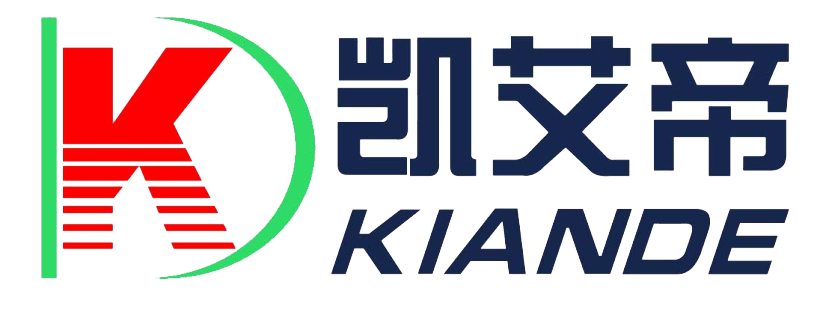
There is no continuous space in the bus bar, no air flow, avoiding the chimney effect, enhancing safety, current carrying capacity, stability, and service life are better than air type and air enhanced type.
Intensive busbar is suitable for AC three-phase four-wire, three-phase five-wire system, frequency 50~60Hz, rated voltage to 690V, rated working current 250~5000A power supply and distribution system, as the supply and distribution system in industrial and mining, enterprises and high-rise buildings The auxiliary equipment of electrical equipment is especially suitable for the transformation of workshops and old enterprises.
Structural characteristics of dense bus duct:
1) Advantages of dense bus duct
The joints are fastened with insulated bolts, and at the same time, double-connected copper bars are used for connection, which effectively increases the contact area of the joints and greatly reduces the temperature rise of the joints.
2) A new generation of environmentally friendly products
Intensive busway conductive row is wrapped with flame-retardant cross-linked polyethylene heat-shrinkable tubing, which has strong insulation performance and no toxic gas is emitted in the event of fire.
3) Flexible wiring
The intensive busway plug interface is flexible and convenient to set up, can set a large number of sockets, and has strong versatility. When adjusting the location of electrical equipment, there is no need to change the power supply system.
The structure of the intensive busbar determines its particularity and complexity in the design, production, manufacturing, and installation process.
The following focuses on the precautions of our company's steel intensive busbar in the production process.
1. Sheet metal production
(1) The cutting, punching and bending accuracy of the busbar must be guaranteed, especially the bending accuracy. The change of the bending angle will cause the conductor ends to be different in length.
(2) All burrs on the cover and side panels should be cleaned up. When the side panels of the steel shell bend horizontally, the outer panel needs to be formed by a bending machine to reduce the bending radius; the inner panel is manually bent to increase the bending Radius, so as to effectively avoid contact between the conductor and the side plate with sharp edges and corners, so as to protect the insulating layer from damage.
(3) The punching and positioning of the elbow side plate must be strictly carried out according to the air-type standard, otherwise the busbar at the corner will be loose, resulting in a decrease in heat dissipation effect and increased operating noise.
2. Welding
(1) Copper bar welding
After the busbar is welded, the current carrying capacity of the original busbar with the same cross-section must be reduced. Therefore, the busbar must be welded with a 45° inclined plane. The purpose of this is to increase the welding surface and improve the current-carrying capacity of the welding surface. After the busbar is welded and formed, both sides must be polished smoothly without any protruding weld seams and impurities.
(2) Welding of cover plate and side plate
The side plate should be welded on the outside, and the cover plate can be welded on the inside. After the cover and side plates are welded and formed, they should be polished and smooth (especially the inner surface) to remove all burrs and impurities.
(3) Whether it is a copper bar or a shell, the welding object must be fixed with a fixture during welding to ensure the accuracy of the welding angle. Weld scars of all welded parts must be completely polished and smooth. Special attention should be paid to the possibility of welding slag or protrusions on the opposite side of the welding surface, and these parts must also be polished and smooth. After the above steps are completed, tin plating can be carried out.
3. Insulation treatment of conductor
(1)School Row
After the busbar is tinned, the straightness of the busbar is required to be calibrated. Only wooden wolf heads or rubber hammers can be used for calibration. Hard metal tools such as iron hammers are strictly prohibited for calibration. If clamps are required, the busbars must be outsourced. Interlayers such as cotton.
(2) Sand row
After the conductor is calibrated, it must be carefully sanded, and all edges, corners, and surfaces of the conductor must be sanded smoothly. Any protrusions, burrs and impurities are strictly prohibited on the conductor. If the welding seam is found or the raw material is flawed, it must be Return to the previous process. After all hidden dangers are eliminated, you can enter the next process. After the sanding is completed, all dust and impurities on the conductor should be wiped off with gauze before use. Pay attention to dust prevention. This process is very important.
(3) Bandaging insulation
After the impurities on the surface of the conductor are treated, you can enter the process of bandaging insulation. The order of bandaging insulation is to first bandage the end bend, the socket bend, the bend or the weld, and then the straight part. The stereotyped film must be wrapped outside the oriented film, and the lap head is divided into 30-50mm (must ensure that the number of oriented film wrapping layers in the 30-50mm overlap surface meets the standard requirements). When wrapping the oriented film, the oriented film can not be narrowed Try not to cut as much as possible to ensure the insulation effect and save materials. The oriented film should be wrapped strictly according to the standard number of layers, no more or less, more will affect the assembly accuracy, and less will affect the insulation level, especially at the corners. Pay attention to the uniformity of the number of wrapping layers. When wrapping the insulation, it must be uniform and dense, and there should be no warping or damage. When fixing it with adhesive tape, stick it in the direction of the wrapping, because of the dense busbar The moisture-proof function is very poor. Therefore, after the entire conductor is wrapped with the insulating layer, the insulating part cannot have direct contact with the conductor and the air at any point. After the wrapping work is completed, the end of the conductor and the socket should be cut off as required. The cutting surface should be flat and beautiful. After the bandaging and cutting process is completed, discharge the mother in the designated position. The storage area should avoid sharp objects from scratching the insulating layer. Be sure to handle with care during transportation and assembly to avoid damage to the insulating layer. ,
4. Treatment before the shell assembly
Before assembly, the inside of the surface-treated shell must be sanded to remove all burrs, particles, impurities, etc. formed by sheet metal or spray molding. After sanding, use gauze to wipe off all dust and impurities before assembling.
5. Assembly environment requirements
The assembly of dense busbars requires a relatively dust-tight environment. The work surface must be clean and dust-free. All semi-finished products must be wiped clean before entering the assembly area. When entering the assembly area, change shoes and work clothes, otherwise too much dust will cause The busbar leakage current increases, and the insulation resistance decreases.
6. Precautions for intensive bus assembly
The end of the side plate of the dense busbar must be pasted with 2*30 insulating double-sided tape to protect the busbar insulation from being damaged by the end of the side plate. The double-sided insulating tape should exceed the end of the side plate by 5mm, and the length should be equal to the side The height of the board is the same. In the middle of the side board, one insulating tape is pasted every 300mm, and the length is the same as the height of the side board.
Before assembling, check the hole positions of the busbar side and cover plate of the unit in advance. If the hole positions are not matched, return to the sheet metal area to punch holes and remove burrs in time. Punching is strictly prohibited in the busbar assembly area.
During the assembly process, if the busbars are not aligned at the ends of the shell, use a wooden or rubber hammer to tap lightly and adjust slowly. It is strictly forbidden to tap or hit with a metal tool. If the busbars of each phase are not the same length, they should be adjusted. The distance between the two ends, halves the error at both ends, and must not accumulate the error to one end.
After the busbar and the side plate are fixed, carefully check whether there are screws, nuts, or other sundries in the busway, and make sure to remove all sundries before covering the cover. The busbar side and cover bolts should be locked. , And the pressure is even, all bolts can not be missed.
7. Inspection of intensive busbars
Because of the structural characteristics of the intensive busbar itself, its factory inspection is particularly important. Each functional unit must undergo strict inspection before it can be put into the warehouse. Products that fail the inspection must never be put into the warehouse. In addition to the appearance inspection requirements for the installation of air-type busbars for dense busbars, the most important thing is to conduct a busbar withstand voltage test of 3750V for 1min on each unit. Products that have passed the busbar inspection line test can be put into the warehouse for testing. The unqualified products are returned to the assembly process, the fault points and causes are found after disassembly, and the withstand voltage test is performed again after rework treatment, and can be put into storage until they are qualified.
Want to know more about the product
Suzhou Kiande Electric Co.,Ltd.
Tel:+86 512 62994177
Phone:+86 18115561910
Fax:+86 512 62764177
E-mail:cy@busabrequipment.com
Skype:yi_tina1
WhatsApp:+8615962150889
Add:No. 123 Suzhou Dadao East Road, SIP, Suzhou City, Jiangsu Province, China


